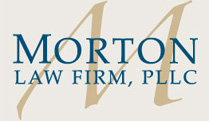What are Trusts, and How are they Used?
There are many types of trusts, and many reasons that people execute them. In its most basic form, a trust is simply an agreement between two people to hold something of value for a period of time under a specific set of instructions. "Will you hold my wallet while I swim in the ocean so it does not get wet. If I drown, please give it to my wife." That was a trust, with me as the grantor, the person holding my wallet as the trustee, and me as the beneficiary. My wife is the substitute beneficiary.
In the estate planning and elder law context,
trusts take two primary forms – revocable and irrevocable. A revocable
trust is one whose terms can always be changed or amended by its
creator. These are sometimes referred to as "grantor" trusts. An
irrevocable trust is one whose terms cannot be changed by its creator. Most people that execute trusts form Revocable Living Trusts. These are generally will substitutes. Chances are, you’ve already heard a lot about the
attributes of Living Trusts: avoiding probate and legal quagmires,
sometimes
lowering estate and/or income taxes and protecting privacy. Yet it’s
also
important to receive solid estate planning guidance before making final
decisions, and to carefully weigh the benefits and potential drawbacks.
Why Choose a Living Trust?
The desire to ensure that an heir is provided for
materially is the most common reason for creating a Living Trust. In the case
of minors, a trust allows a parent to provide for a child without giving the
child control over the property. The parent can also mandate how the property
is to be distributed and for what purposes.
A trust is also a useful tool for taking care of heirs
who have mental impairments or lack investment experience. The trust document
can establish that all money is controlled by a trustee with sound investment
experience and judgment. Likewise, a trust preserves the integrity of funds
when the recipient has a history of extravagance. It can protect the property
from an heir’s spendthrift nature as well as from his or her creditors.
This is also true of persons who may feel pressure from
friends, con artists, financial advisors and others who want a slice of the
pie. A Living Trust can make it extremely difficult for a recipient to direct
property to one of these uses.
A “spendthrift” provision in a Living Trust is often used
to further preserve the integrity of assets. It prohibits the heir from
transferring his or her interest and also bars creditors from reaching into the
trust. Living Trusts are relatively easy
to update, modify or revoke in most cases. A will, however, is difficult to
change, and establishing one requires many formalities.
Short-circuiting the Ordeal of Probate
Among the most popular benefits of a Living Trust is the
avoidance of probate. Because property in the trust is not considered part of
an estate, it does not have to undergo this sometimes lengthy process. The
property is instead administered and distributed by the trustee, according to
the specific terms of the trust.
Probate expenses can be significant. Costs vary according
to the size of the estate and what it includes. It also varies by state. Some
have very expensive and onerous procedures, while others offer a streamlined
version of probate.
Avoiding probate means not only avoiding hassle and
expense, but also saving time. Probate can extend the amount of time before an
heir receives an inheritance by months, years – even longer if the will is
contested. Not only can this create hardship among the heirs, but the property
in the estate may also suffer. Many assets must be carefully managed to
preserve and enhance their value. Losses may easily occur during this interim
period.
There is an emotional price to pay, too. Survivors may be
continually reminded of the loss of a loved one as the process drags on.
Probate can also lead to loss of privacy. Wills and
probate are public matters, whereas a Living Trust keeps the estate private.
Typical probate documents list all assets, appraised value and names of new
owners. This information becomes available to marketers, media, creditors and
con artists.
If the estate includes real property in more than one
state, the process becomes even more complex. An ancillary administration is
required to probate out-of-state real estate. As you can imagine, “double
probate” is even more time-consuming, expensive and emotionally taxing than a
single probate process.
Probate also allows the original owner’s creditors a shot
at the property. Although there is still some controversy about the extent of
its creditor-shielding benefits, a Living Trust generally makes it much more
difficult for an estate to be consumed by creditor claims.
Maintaining Control
Living Trusts are harder to contest than wills. Part of
the reason is that trusts usually involve ongoing contacts with bank officials,
trustees and others who can later provide solid evidence of the owner’s intentions
and mental state. A Living Trust that has been in place a long period of time
is less likely to be challenged as having been subjected to undue influence or
fraud. And because it is a very private document, the terms of the trust might
not even be revealed to family members, allowing less opportunity for
challenges to its provisions.
A Living Trust also avoids the painful ordeal of “living
probate.” That’s what happens when a person is no longer competent to manage
property, whether because of illness or other causes. Without a Living Trust, a
judge must examine whether you are in fact incompetent, and all of the
embarrassing details of your incompetence will be dragged out in court. The
judge will appoint a guardian – perhaps someone you would not want to manage
your affairs. Guardians act under court supervision and often must submit
detailed reports, meaning that the process can become quite expensive.
With a Living Trust, your designated trustee takes over
management of trust property and must manage it according to your explicit
instructions in the trust document. The terms typically set standards for
determining whether you are incompetent or not. For example, you may specify
that your doctor must declare you can no longer manage your financial and
business affairs.
Managing Assets, Easing Tax Burdens
Living Trusts also provide a way for beneficiaries to
receive the guidance of professional asset managers. A bank may be named as a
successor trustee or co-trustee, allowing an experienced trust department to
manage the assets.
Of course, eliminating or reducing taxes is one of the
primary goals of estate planning. Trusts allow for a highly flexible approach
to taxes. Income taxes can be slashed by transferring income-producing assets
to a recipient in a lower tax bracket. By use of the marital tax deduction and
separate trusts, the federal government’s estate tax exclusion can be doubled.
(In 2006, the “double” exemption would be $4 million.) And some trusts are a
prudent destination for annual gifts that fall within the government’s tax-free
gift allowance ($12,000 per year for individuals, $24,000 a year for couples,
with this amount indexed to inflation).
Are There Disadvantages to a Living Trust?
A trust may not be needed by all individuals and
families. Depending on the terms, trusts can result in some loss of control.
Also, it is important to transfer all titled property
into the trust on a regular basis to keep it current. Property outside the
trust is part of the individual’s estate, and will trigger the probate process
you hoped to avoid by creating the Living Trust. Formal transfers of property
into the trust are required even when you and the trustee are the same
individual.
A Living Trust costs more than a will to create, although
it saves large amounts later through its probate-avoidance feature. Deeds will
be necessary for transferring real property into the trust, and that will also
involve some additional expense. Also, attention must be paid to keeping the
trust current. That means making sure all property is in the trust, and
adjusting it for changed circumstances; for example, after the birth of a child
or the dissolution of a marriage.
If these seem like minor disadvantages, you’re right. For
most people, the attention and initial expense involved in a Living Trust is
worth the significant benefits for family and other heirs: the avoidance of
probate, the tax advantages, and the preservation of privacy and independence.
What About Asset Protection and Medicaid Planning?
Usually these types of plans are handled using a combination of Irrevocable Trusts and Revocable Trusts. Sometimes, it is more appropriate to use a Testamentary Trust for this type of planning. Every case truly is unique and requires customized planning. Information on some of the more common Medicaid trusts can be found on our web site. To discuss the planning most appropriate for you and your loved one, please feel free to contact our office for a consultation.









Sorry, comments for this entry are closed at this time.